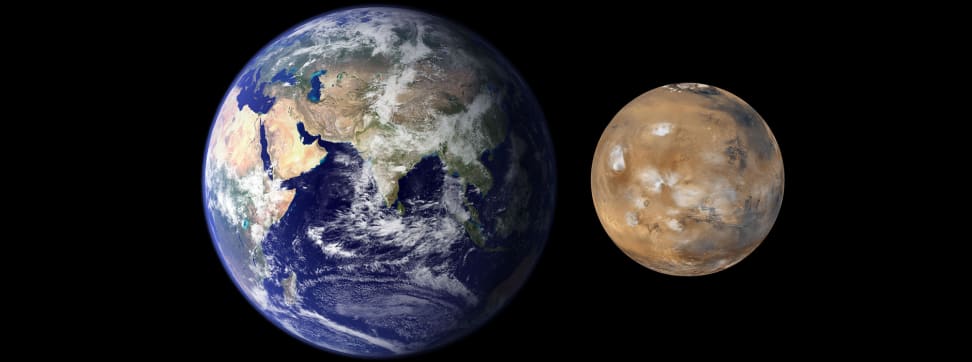Strawberries on Mars? LEDs May Be Key to Space Farms
LED-lit greenhouses could let Martian explorers enjoy Martian salads.
 Credit:
Credit:
Recommendations are independently chosen by Reviewed's editors. Purchases made through the links below may earn us and our publishing partners a commission.
NASA says it can put humans on Mars by the mid-2030s. Elon Musk says his private space venture, SpaceX, will get there by 2026. Whoever is right, one thing is for certain: Visitors to Mars will need a sustainable source of food. So why not farm it on Martian soil?
The logistics of a round-trip manned mission to the Red Planet are daunting. The vast distance between Earth and Mars, and the precise planetary alignment needed for the return journey, guarantee a total duration of at least 2.5 years. Resupply missions would almost certainly be out of the question.
The problem, of course, is keeping up a steady supply of food, water, and oxygen. But there are plenty of scientists working to crack that particular nut. Researchers at the University of Guelph in Canada believe LED lights will be the key—at least when it comes to producing Martian crops.
![Different colors of LED light produce different colors and flavors in lettuce. [Credit: Mike Dixon]](https://reviewed-com-res.cloudinary.com/image/fetch/s--q5MQDlnf--/b_white,c_limit,cs_srgb,f_auto,fl_progressive.strip_profile,g_center,q_auto,w_792/https://reviewed-production.s3.amazonaws.com/attachment/8a79f91aa5104c2a/lettuce-mike-dixon.jpg)
Different colors of LED light produce different colors and flavors in lettuce. [Credit: Mike Dixon]
Mike Dixon, a professor of environmental biology, told the CBC that a “magic recipe” of wavelengths within the electromagnetic spectrum can create super-efficient growing conditions in extreme environments—be it on Mars, the International Space Station, Earth, or even the moon, which has no atmosphere. And LED lighting is technology that will allow it.
“The permutations and combinations are endless,” Dixon said. “So even though we're starting with a fairly well-educated guess as to how to construct the ideal spectrum, the plants confound you because they adapt.”
Right now, the researchers are focused on growing lettuce—mostly because it's a simple, fast-growing plant. The ultimate goal, however, is to transition to more high-value fruits like strawberries and cherry tomatoes. Imagine being the first human to enjoy a Martian salad.
Even in space, plant-based life-support systems are not new. Astronauts have been growing small plants on the International Space Station for years. In April, a SpaceX resupply vessel shipped a plant-growth chamber to the ISS. The “Veg-01” experiment is designed to study the feasibility and safety of growing vegetables in a zero-gravity environment.
Similarly, LED-based farming isn't limited to research laboratories and astronaut daydreams. It’s already a reality here on Earth.
Japan recently unveiled a massive indoor farm that relies on LED lights to grow crops. Housed inside a former Sony factory, the world’s largest indoor farm produces 10,000 heads of lettuce a day, at a rate 2.5 times faster than traditional methods. The LED-powered method also cuts water consumption to 1 percent of the amount used by outdoor farms, and reduces plant losses from 50 to 10 percent.
Dixon told the CDC that within the next 15 to 20 years, humans may begin growing such plants on the surface of the moon as research for Martian agriculture. For Bob Thirsk, a retired Canadian astronaut, the benefits of Martian or lunar agriculture are not merely practical—they’re psychological.
"We're looking forward to the day when astronauts can actually eat fresh fruit and vegetables for the nutritional value, for the psychological value, and also just because it's closer to home cooking and provides good psychological support," he told the CBC. “You want the sights, the sounds, the smells, the tastes of Earth because we're all human beings and that's where we're from."
Via: CBC

